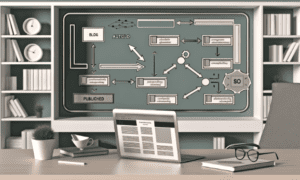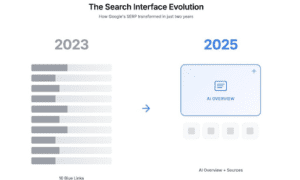Introduction: Real-World Finance, Not Venture Theater
It’s easy to build a financial product that looks good on a pitch deck. It’s much harder to build one that holds up under the pressure of 5PM payroll deadlines, late-night vendor emergencies, and week-to-week cash flow juggling.
Sabeer Nelli understands that pressure intimately—not as a consultant or an executive, but as someone who’s lived it. Before launching Zil Money and OnlineCheckWriter.com, he ran a network of gas stations, managed hundreds of vendor relationships, and operated inside the chaos most fintech founders never experience firsthand.
That background shaped every decision he made while building Zil Money. And it’s why the platform today feels different: less like a startup product, more like a co-pilot for business operators.
The Operator’s Lens: Building From the Back Office Out
Most fintech platforms are created by teams sitting in office towers—solving problems from spreadsheets and brainstorms. Zil Money was born out of frustration from real workflows:
- Paper checks that took too long
- Bank transfers that created delays
- Payroll systems that didn’t talk to anything else
- Tools that required workarounds to do basic things
Nelli’s first instinct wasn’t to start a company—it was to fix his own process. Once the internal tool worked, he realized something bigger: if this could save his business hours a week, it could probably help others too.
That’s when Zil Money became a platform—and not a tech project.
Operator First, Investor Never
Sabeer Nelli didn’t raise venture capital. That wasn’t just a strategic decision—it was a philosophical one.
He didn’t want outside money dictating timelines or feature priorities. He didn’t want to “optimize for ARR” at the expense of solving real user problems. And he didn’t want to chase scale if the product wasn’t ready.
Instead, he followed a simple principle: listen to the operator, not the spreadsheet.
That meant:
- Rolling out features based on direct user feedback
- Slowing down growth if the infrastructure needed shoring up
- Adding international payments when users asked—not when investors wanted “global expansion”
The result is a company that has grown on user trust, not investor hype.
Features That Respect Operator Reality
If you explore Zil Money’s feature set, you won’t see fluff. You’ll see tools that map directly to the workflows business owners face every week:
- Check printing from any printer: No special hardware, no waiting for pre-printed stock
- ACH, wire, and credit paymentsin one unified interface
- Multi-user accesswith role-level permissions—for teams that share responsibilities
- Integrated business checking accountsvia US for smoother cash flow and fewer delays
- Recurring payments, refunds, and one-time vendor transactions—all from the same dashboard
Each feature exists because a customer needed it, asked for it, or found a workaround until it became native.
There’s nothing theoretical here. It’s all battle-tested by businesses that don’t have time for beta bugs.
Real Use Case: Solving for Chaos, Not Just Scale
A multi-location cleaning services company recently shared how they use Zil Money:
- Each branch manager has login access
- HQ runs weekly payroll across locations
- Vendor payments are issued by check or wire based on vendor preference
- If a check is lost or misprinted, they cancel and reissue without calling a bank
Before Zil Money, this process involved three platforms, a bank visit every week, and hours of manual coordination.
Now? It’s done in one system. No delays. No duplicate entries. And no need for a finance degree to operate it.
This isn’t a Silicon Valley showcase. It’s real operations made better by real tools.
Why Operator-Led Product Design Matters
When you build for operators—not boards or investors—you focus on different things:
- Speed of action, not just speed of growth
- Reliability under pressure, not just onboarding metrics
- Clarity, not flashy dashboards
- Customer support, not just chatbot efficiency
And critically, you build for businesses that don’t have the luxury of getting it wrong.
Zil Money users run payroll for people who rely on that check. They pay vendors who won’t deliver unless they’re paid on time. They reconcile accounts on Sunday night so Monday starts smoothly.
Every design decision reflects that reality.
How Zil.US Extends the Vision
The launch of Zil.US didn’t come from a desire to “be a neobank.” It came from customer demand:
- “I need to send payments faster, without waiting for bank transfers.”
- “Can I keep my operations in one place instead of bouncing between tools?”
- “Why do I have to open a new bank account at a branch when I already trust you?”
So Nelli responded—by integrating the ability to open business checking accounts directly inside the Zil Money platform.
Now users can:
- Receive and hold funds
- Make internal transfers instantly
- Keep payroll and operating funds separate
- Eliminate banking delays and hidden transfer fees
It’s the same operator-first mindset—just extended across more of the financial stack.
Key Lessons From the Zil Money Model
For entrepreneurs looking to build tools for businesses (not just consumers), Nelli’s approach offers key takeaways:
- Solve for the actual job
Too many founders solve for product categories. Zil Money solves for the work business owners actually need to do—today.
- Don’t hide behind growth metrics
Retention matters more than reach. If operators keep using your product, growth will follow naturally.
- Be obsessed with use, not just usability
Pretty UX doesn’t matter if the user has to open three tabs to get paid.
- Your support experience is part of the product
Zil Money succeeds because when something goes wrong, real help shows up. Fast.
Conclusion: Respecting the Operator
Zil Money isn’t flashy. It’s not chasing media features. And it doesn’t ask users to change how they work.
Instead, it adapts to the operator. It fits into existing routines. It clears friction without requiring fanfare. And it proves that the most powerful kind of fintech isn’t disruptive—it’s dependable.
For Sabeer Nelli, the mission isn’t to “innovate” for innovation’s sake. It’s to make sure the person actually running the business—cutting checks, managing payroll, solving real problems—has a tool that respects their time, their workflow, and their pressure.



































